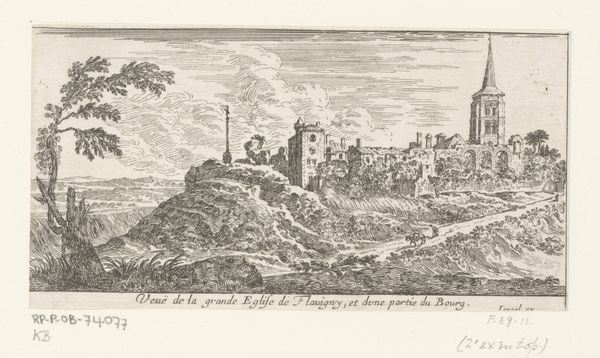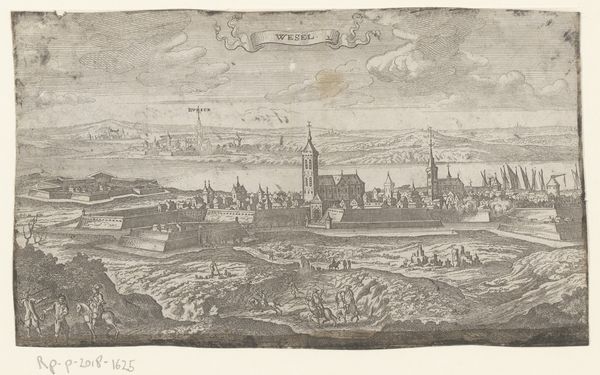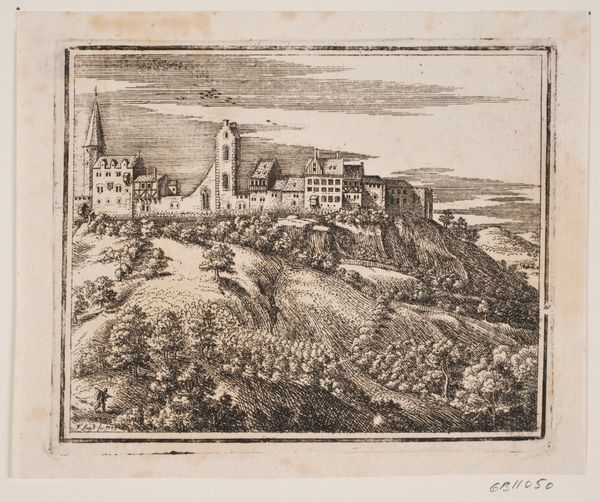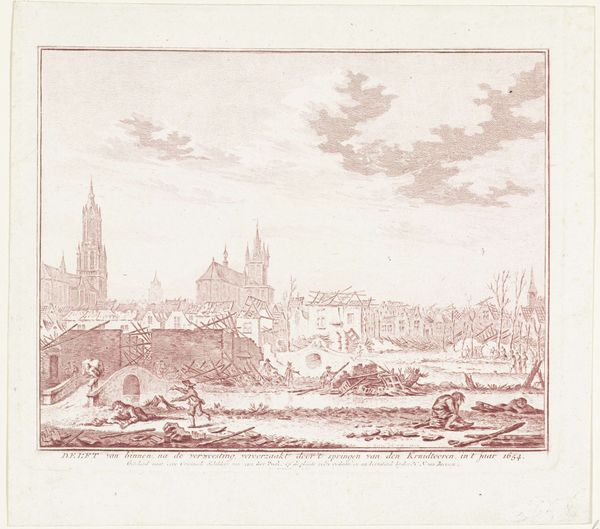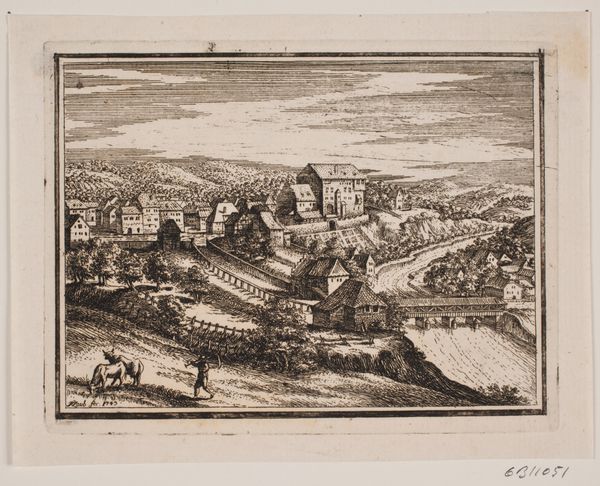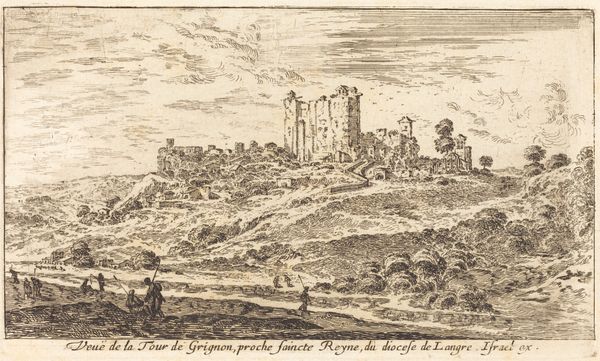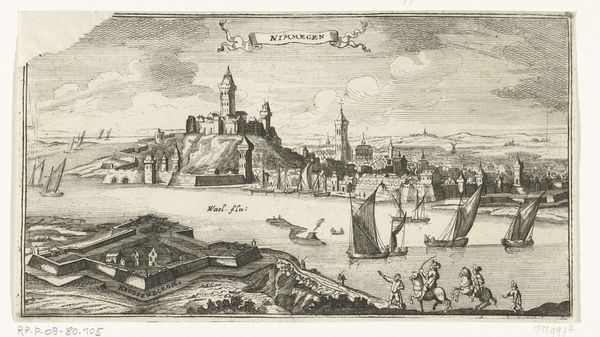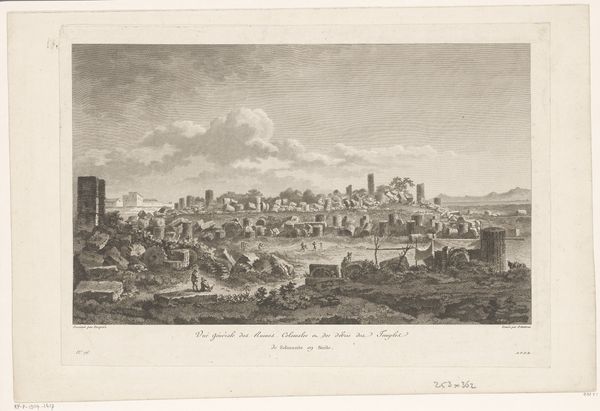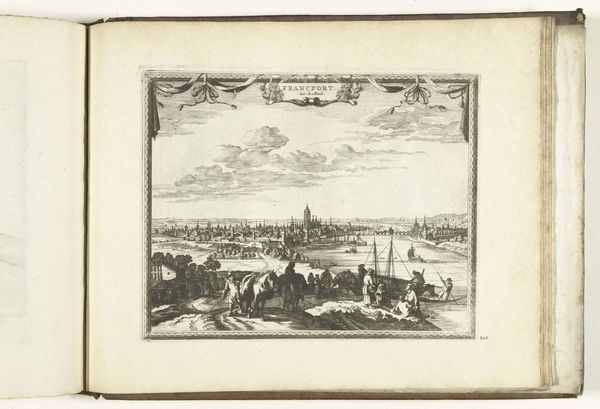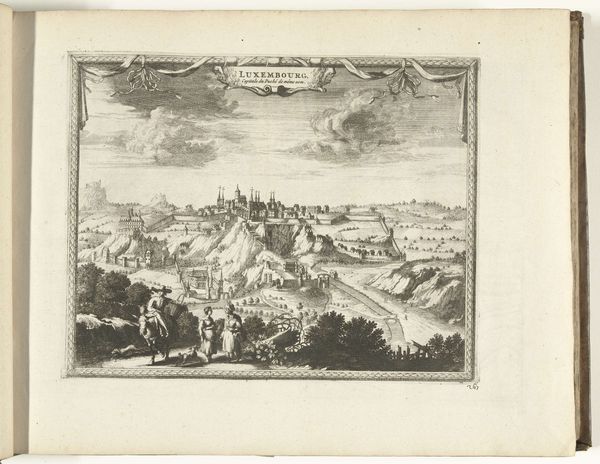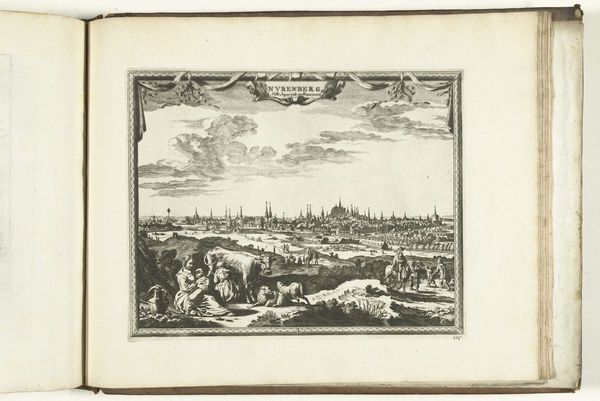
print, engraving
#
baroque
# print
#
landscape
#
cityscape
#
engraving
Dimensions: height 94 mm, width 107 mm
Copyright: Rijks Museum: Open Domain
This is a print, made by Israel Silvestre in the 17th century. The image of Semur-en-Brionnais castle is achieved through the technique of etching, which allows for fine, detailed lines. Think of it as controlled corrosion. The artist would have coated a metal plate with a waxy, acid-resistant substance, drawn the image into this coating, then immersed the plate in acid, which bites into the exposed lines. The resulting incised lines hold ink, which is then transferred to paper under high pressure. The quality of the print depends on the artist's skill in drawing, but also on the etcher's ability to control the corrosive action of the acid. Look closely, and you can see how the lines vary in thickness and depth, creating a sense of light, shadow, and texture. Beyond its aesthetic qualities, the print is also an object produced within a specific economic system. Silvestre would have relied on a network of suppliers for his materials – metal, wax, acid, ink, and paper – and a system of distribution to sell the final product. The print offered consumers views of landscapes and architecture, packaged and ready for display. This combination of artistry and commerce speaks to a moment in history, where aesthetics and commodity begin to intertwine.
Comments
No comments
Be the first to comment and join the conversation on the ultimate creative platform.

